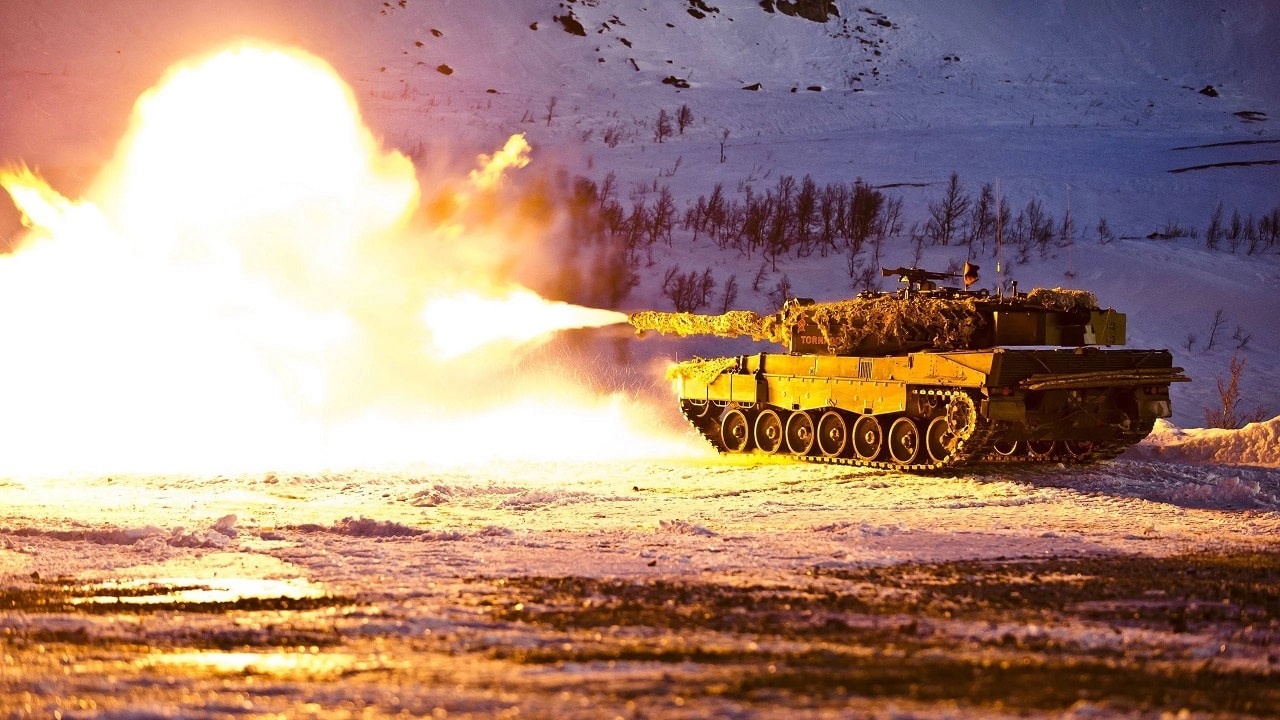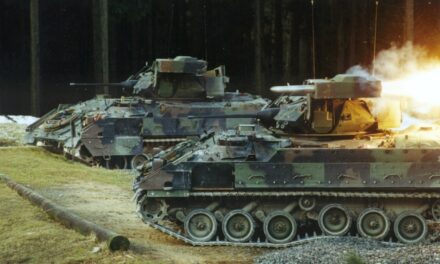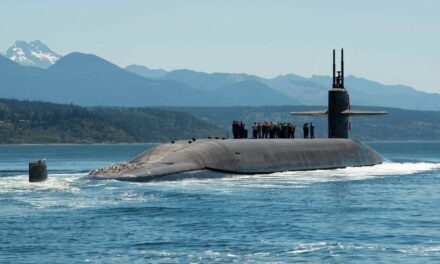We support our Publishers and Content Creators. You can view this story on their website by CLICKING HERE.
Key Points: The German Leopard 2 tank, regarded as NATO’s premier European main battle tank, has faced challenges in its Ukrainian deployment.
Despite its advanced design, which includes a 120mm Rheinmetall smoothbore gun, high mobility, and modular armor with Trophy Active Protection Systems, operational issues arose due to maintenance difficulties and a lack of spare parts.
Initially developed during the Cold War, the Leopard 2 has undergone multiple upgrades, with the latest A8 model maintaining its status as a top-tier tank.
However, its mixed performance in Ukraine underscores the complexities of modern tank warfare and the importance of logistical support for advanced platforms.
Leopard 2: NATO’s Top Tank Faces Real-World Challenges in Ukraine
The German Leopard 2 tank, regarded as NATO’s premier European main battle tank, has faced challenges in its Ukrainian deployment.
Despite its advanced design, which includes a 120mm Rheinmetall smoothbore gun, high mobility, and modular armor with Trophy Active Protection Systems, operational issues arose due to maintenance difficulties and a lack of spare parts.
Initially developed during the Cold War, the Leopard 2 has undergone multiple upgrades, with the latest A8 model maintaining its status as a top-tier tank.
However, its mixed performance in Ukraine underscores the complexities of modern tank warfare and the importance of logistical support for advanced platforms.
One modern tank that was supposed to end the stalemate was the vaunted German Leopard 2 tank. This modern beast has all the goodies that you would expect. It is arguably NATO’s best tank produced by a European member. The Leopard is fast, powerful, and agile, with great armor and a respectable gun.
But how has it done in Ukraine? And what does that performance say about the overall future of the tank?
Inauspicious Start to Ukrainian Service
After much governmental wrangling, Germany finally sent Ukraine 80 Leopard 2s in early 2023. They haven’t exactly set the world on fire. Many of the tanks were damaged in battle, and at least one German lawmaker admitted that the Ukrainians were lacking spare parts and were forced to come up with their own homegrown methods to fix the tanks. This delayed maintenance periods and kept many Leopard 2s on the sidelines.
Leopard 2A4. Image Credit: Creative Commons.
Developed During the Cold War in the 1960s
The Leopard 2 was an outgrowth of the Leopard 1, which first entered production by Krauss-Maffei in 1963. The Leopard 1 was popular on the export market, and Germany sent it to eight allied countries. The Leopard 2 was first completed in 1979 and was also a hit internationally and exported broadly.
Many Variants Have Improved the Original Model
Several variants of the Leopard 2 have evolved over the years. One of the best models, the Leopard 2 A7+, was released in 2010. The Leopard 2 A8 followed. The base models of the Leopard 2 are now in service with 23 nations.
Porsche: There Is No Substitute
One interesting historical nugget about the Leopard program is that Porsche was involved early in the process. Porsche worked on the Leopard 1 hull in 1967. By 1970, the Germans had built several different hulls to test. In the early 1970s, the Leopard 1 had a basic model 120mm smoothbore gun. In 1975, the new Leopard 2 prototype was placed in trials in the United States. The hull had better armor and a new fire control system.

Leopard 2 Tank. Image Credit Creative Commons.
Tinkering With the Gun
After getting feedback and acquiring testing data, designers opted for more firepower, and Rheinmetall installed a modern 120mm smoothbore gun (caliber length 44) with an accompanying fire control system.
The German Ministry of Defense was finally impressed with this iteration of the Leopard 2, and it ordered 1,800 of the main battle tanks in 1977. Then the guns were upgraded again hoping for a weapon that would overawe the Soviets during the Cold War.
Fighting-Vehicles.com described this gun program with enthusiasm. “The increased caliber length of the barrel meant the armor piercing round had further to travel when fired, which allowed the energy of the combustible charge to build up behind it for longer, which pushed it out faster and resulted in greater accuracy, range and ‘punch’ when it hit the enemy tank.”
Modern Specs Emerge
After 2010, subcontractors focused on improving the modern Leopard 2’s armor. In 2016, Rheinmetall introduced the new modular Hard-Kill Active Protection System. In 2021, several subcontractors led by Rafael formed an effort to install the Trophy Active Protection System on the Leopard 2.
Leopard 2s travel with a diesel engine that puts out 1,500 horsepower. Top speed is 44 miles per hour on roads.
By 2023, the Leopard 2 was up to its eighth iteration. You have to give the Germans credit for spending such a significant amount of time, money, and resources to upgrade this platform so much. Many German companies had a hand in production and have made this one of the best tanks in the world. It is so advanced that the Ukrainians have endured some difficulty repairing and maintaining it, but the German government made the right choice to send it to fight the Russian invaders. We will continue to track the Leopard 2 to see how it performs on the battlefield in Ukraine and if NATO partners keep ordering it in numbers.
About the Author: Dr. Brent M. Eastwood
Brent M. Eastwood, PhD, is the author of Don’t Turn Your Back On the World: a Conservative Foreign Policy and Humans, Machines, and Data: Future Trends in Warfare, plus two other books. Brent was the founder and CEO of a tech firm that predicted world events using artificial intelligence. He served as a legislative fellow for U.S. Senator Tim Scott and advised the senator on defense and foreign policy issues. He has taught at American University, George Washington University, and George Mason University. Brent is a former U.S. Army Infantry officer. He can be followed on X @BMEastwood.

 Conservative
Conservative  Search
Search Trending
Trending Current News
Current News 





